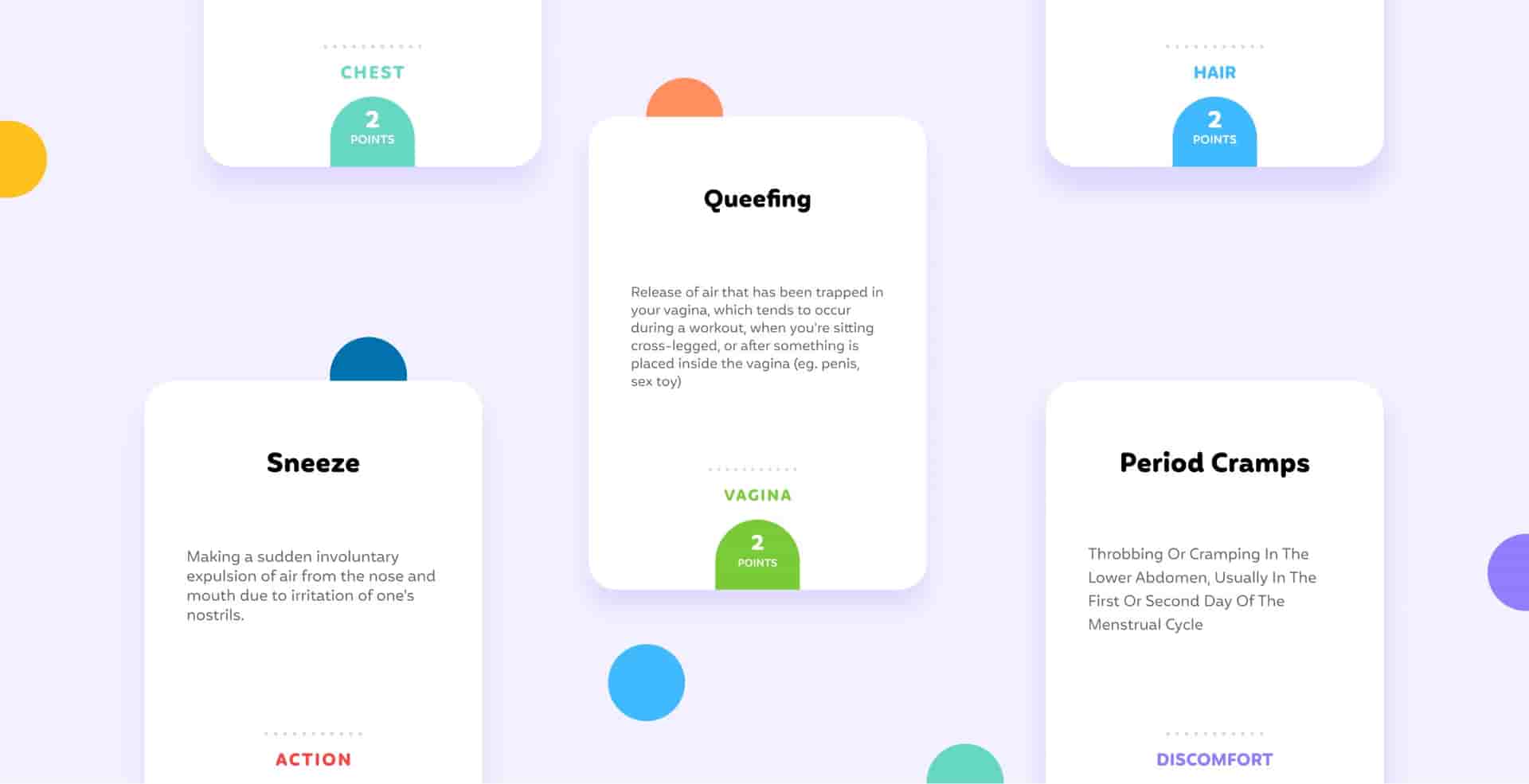Overview
Bod.ily (pronounced "bod-i-love-you") is a party game designed to normalize conversations around women's health through playful interaction. The project emerged from recognizing how stigmas around menstruation, body hair, and sexual health persist across cultures, often preventing open dialogue and perpetuating misconceptions.
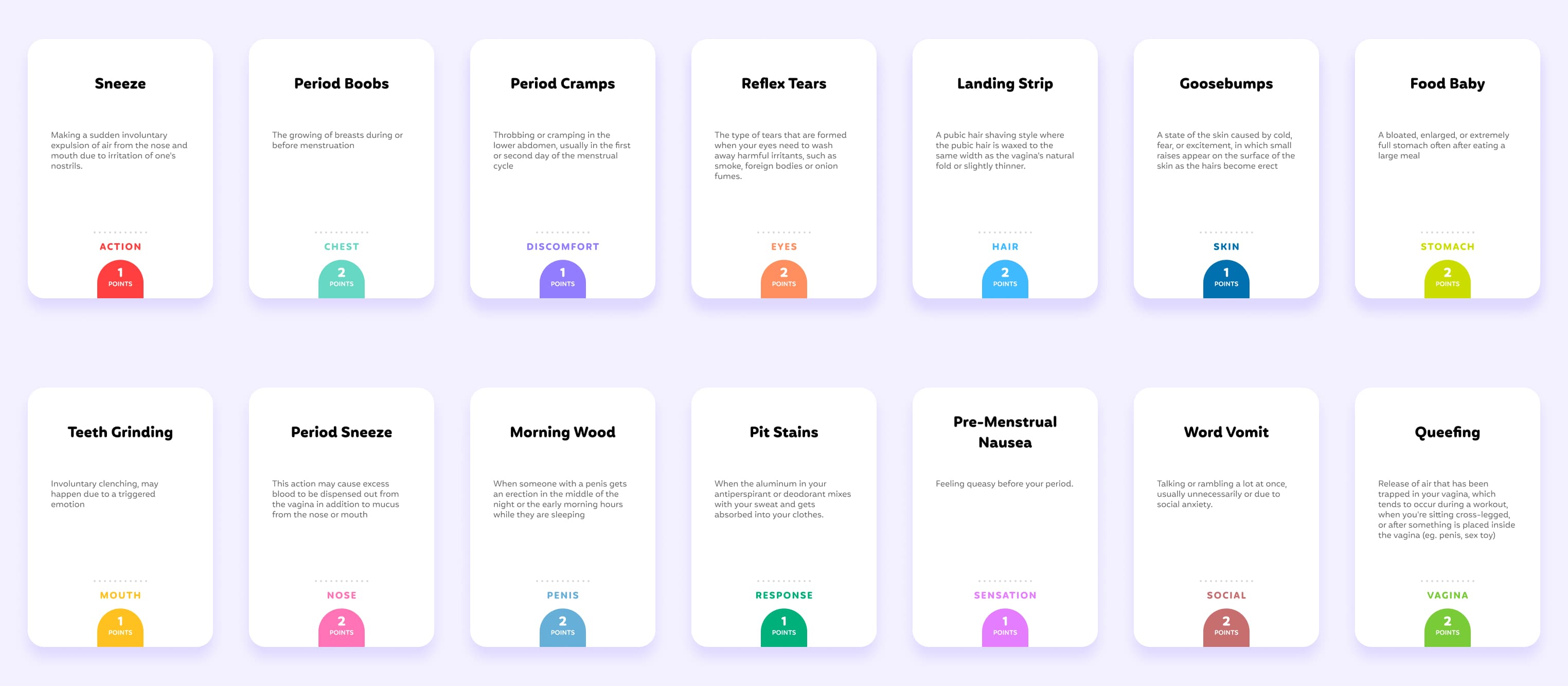
If you want to try the game, here's the instructions to help you prepare your deck.
Research & Strategy
Target Audience
We focused on young men aged 18-30 who maintain close relationships with women. This demographic:
Frequently interacts with women
Frequently interacts with women in their daily lives
Hesitant to discuss
Often shows hesitation in discussing women's health topics
Potential for change
Has potential to either perpetuate or help dissolve existing stigmas
Research Methods
Our research combined literature review and user interviews to understand how gender, self-objectification, and cultural norms influence attitudes toward women's health topics. We conducted literature review to build our understanding of existing research and interviews to validate our assumptions.
Existing Literature
Over 12 academic papers. Annotated bibliography available here.
Male participants
3 male participants (ages 18-24)
Female participants
2 female participants (ages 18-24)
Domain experts
3 domain experts including sex educators and researchers
Research Findings
Limited education
Insufficient coverage of women's health topics in formal settings
Relationship dynamics
Comfort levels vary significantly based on relationship closeness
Cultural factors
Strong influence of cultural and religious norms on discussions
Indirect approach
Need for indirect, safe spaces to discuss sensitive topics
Persuasive Strategies
We identified two key strategies for the game to address the identified challenges:
Topic Intermixing
Combining stigmatized topics with related but less taboo subjects to make discussions more approachable
Implicit Persuasion
Framing the experience as a fun party game rather than an explicit educational tool to reduce resistance
Design Evolution
First Iteration: The Adulting Game
Our initial prototype combined Pictionary and Charades with a generalized "adulting" theme. To obfuscate the game's purpose, we used have two different sets of cards:
- On-Topic (e.g. "period", "dildo")
- Off-Topic (e.g. "laundry", "quitting a job")
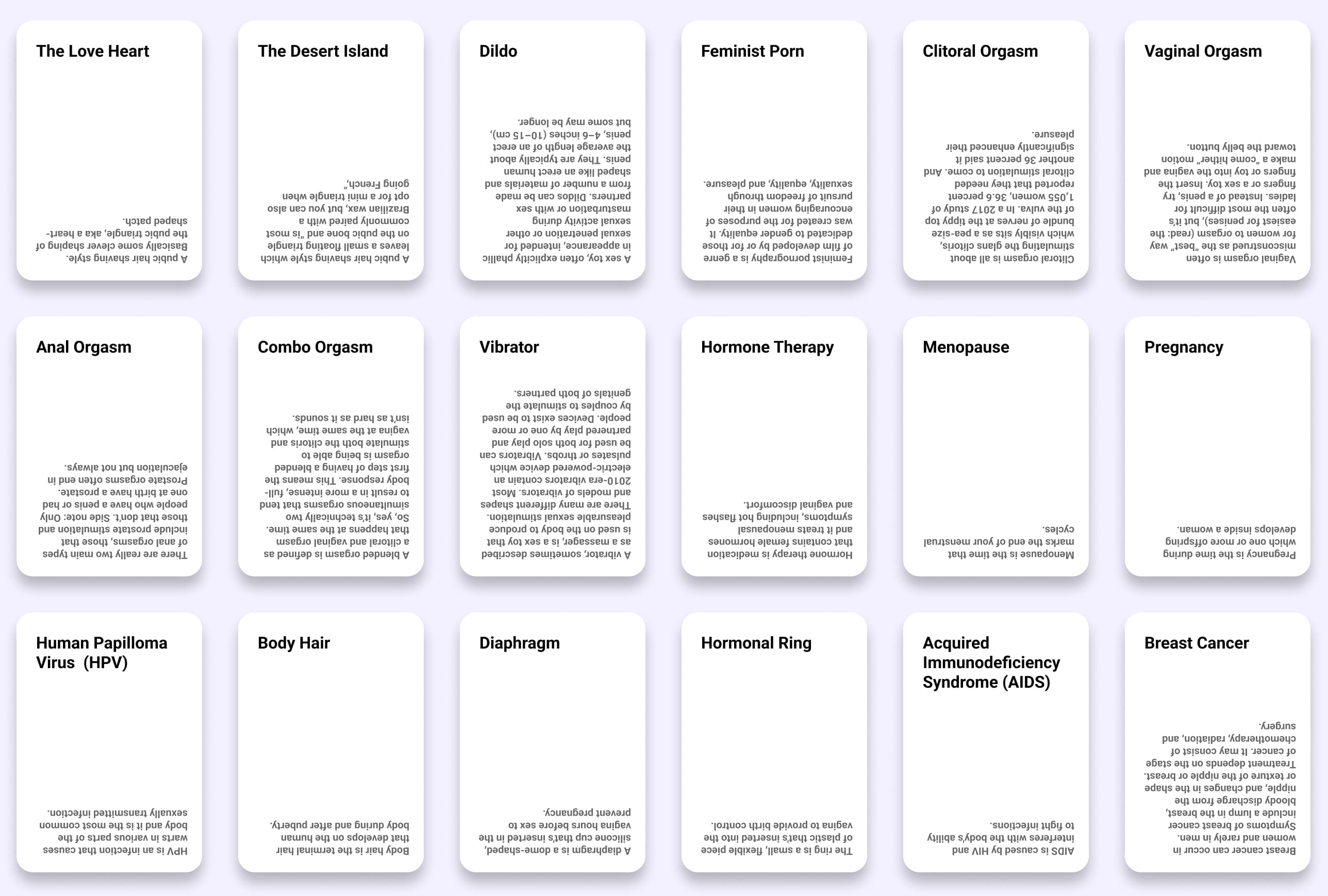
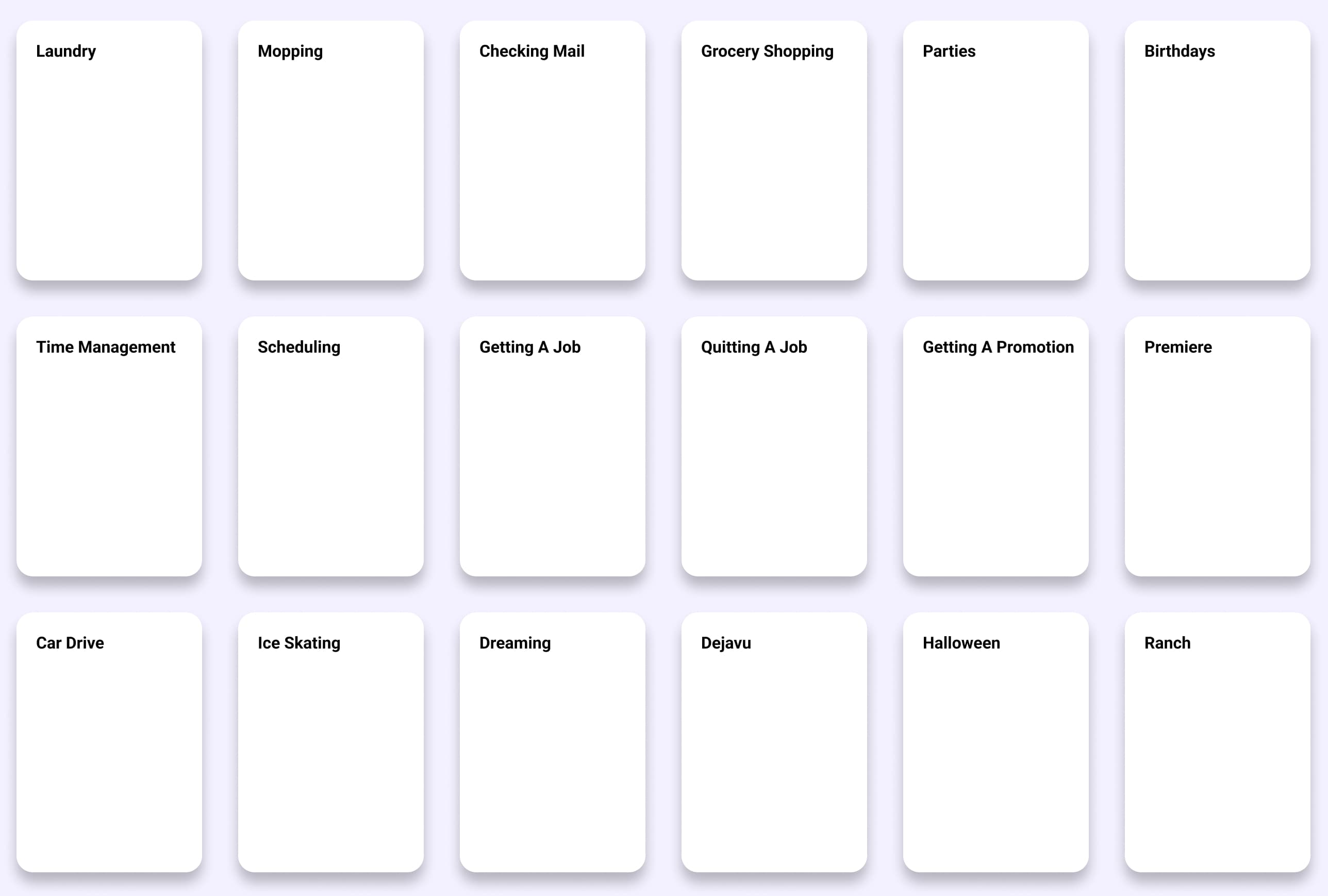
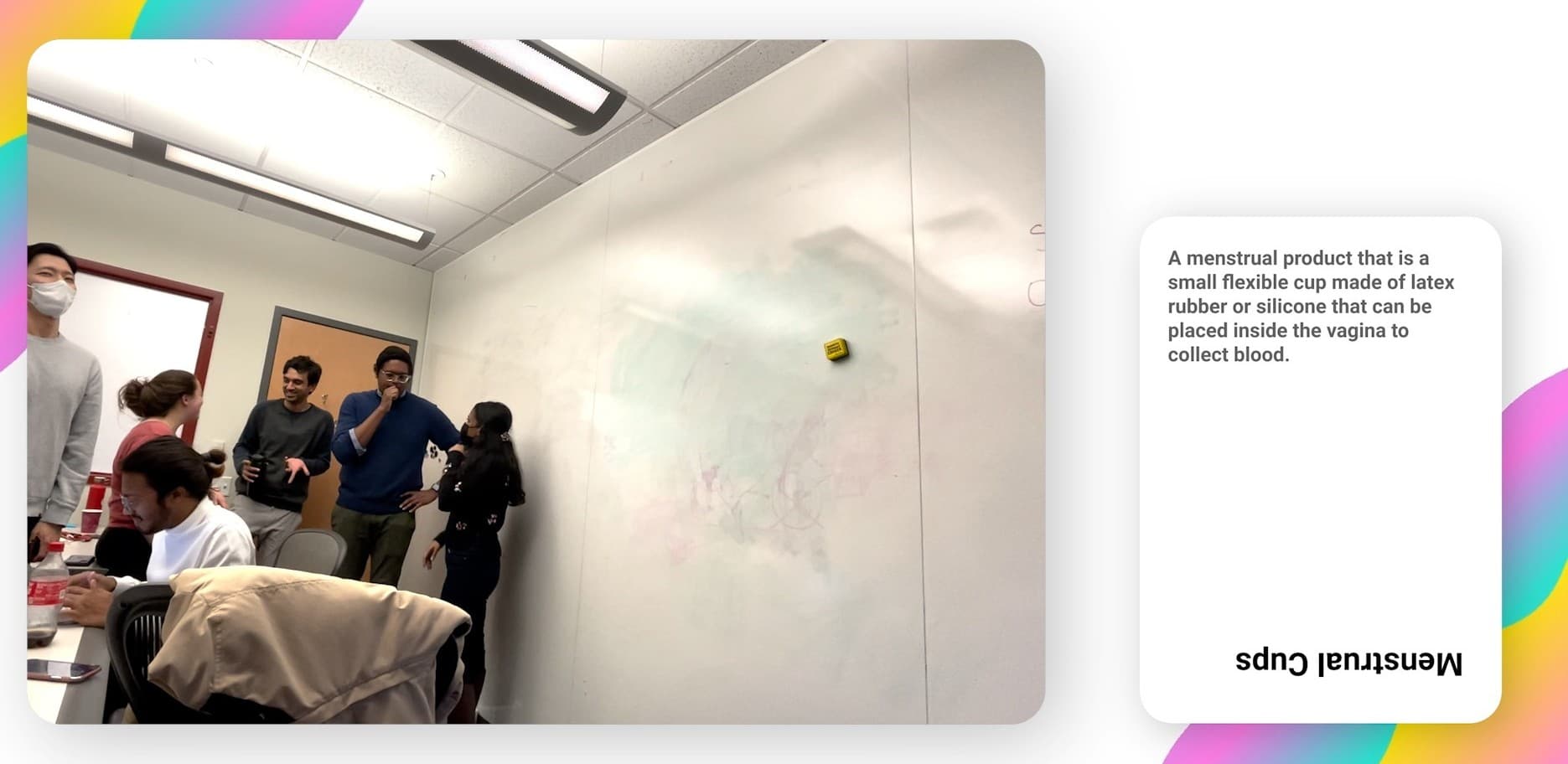
After testing the game with participants, we learned that:
Descriptions needed better integration
Players skipped reading card descriptions, suggesting they weren't effectively integrated into core gameplay mechanics
Lack of thematic focus
The mix of general adulting and women's health topics diluted the game's core message and created a disjointed experience
Gameplay elements felt disconnected
The various game mechanics and card types didn't work together cohesively to support the learning objectives
Second Iteration: Points System
We modified the design to include:
Expanded Card Variety
Added more general lifestyle and health topics to create a natural blend with women's health cards
Knowledge Incentives
Introduced point multipliers for players who could explain terms in detail, encouraging deeper engagement with the content
Scoring System
Developed dynamic scoring mechanics that rewarded both gameplay skill and topic understanding

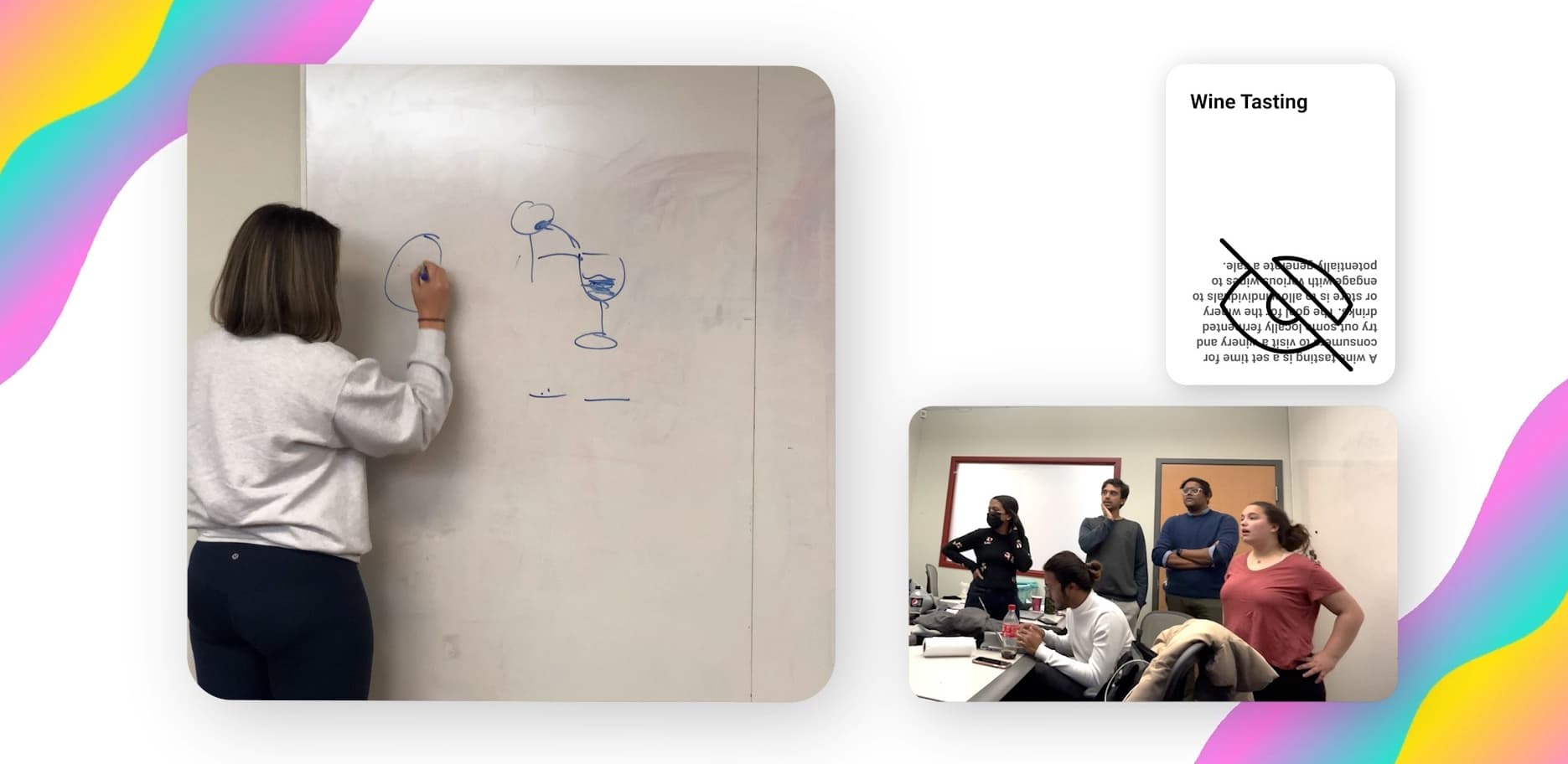
After testing the game with participants, we learned that:
Imbalanced reward system
Point bonuses for definitions felt arbitrary and unrewarding, especially for common terms that didn't need explanation
Mixed messaging
The combination of health and lifestyle topics created an unclear narrative and diluted the game's educational goals
Inconsistent participation
Players showed varying levels of interest and involvement, with some dominating play while others remained passive
Final Design: Three-Round Format
After consultation with instructors, we pivoted to a format inspired by games like Monikers and Salad Bowl.
We designed the game to progress through three rounds with the same deck, each round creating a different way of engaging with the concepts.
Spaced Repetition
Reinforces learning through strategic repetition across multiple rounds
Diverse Learning Styles
Accommodates visual, verbal, and kinesthetic learning preferences
Progressive Comfort
Gradually builds confidence through increasingly expressive gameplay modes
Gamified Learning
Transforms sensitive topics into engaging social gameplay experiences
Each round typically lasts 3 minutes per team, with points awarded for successful guesses. The decreasing verbal freedom across rounds challenges players to think creatively about how to communicate these concepts, leading to deeper engagement with the subject matter.
Round 1: Anything but the word itself
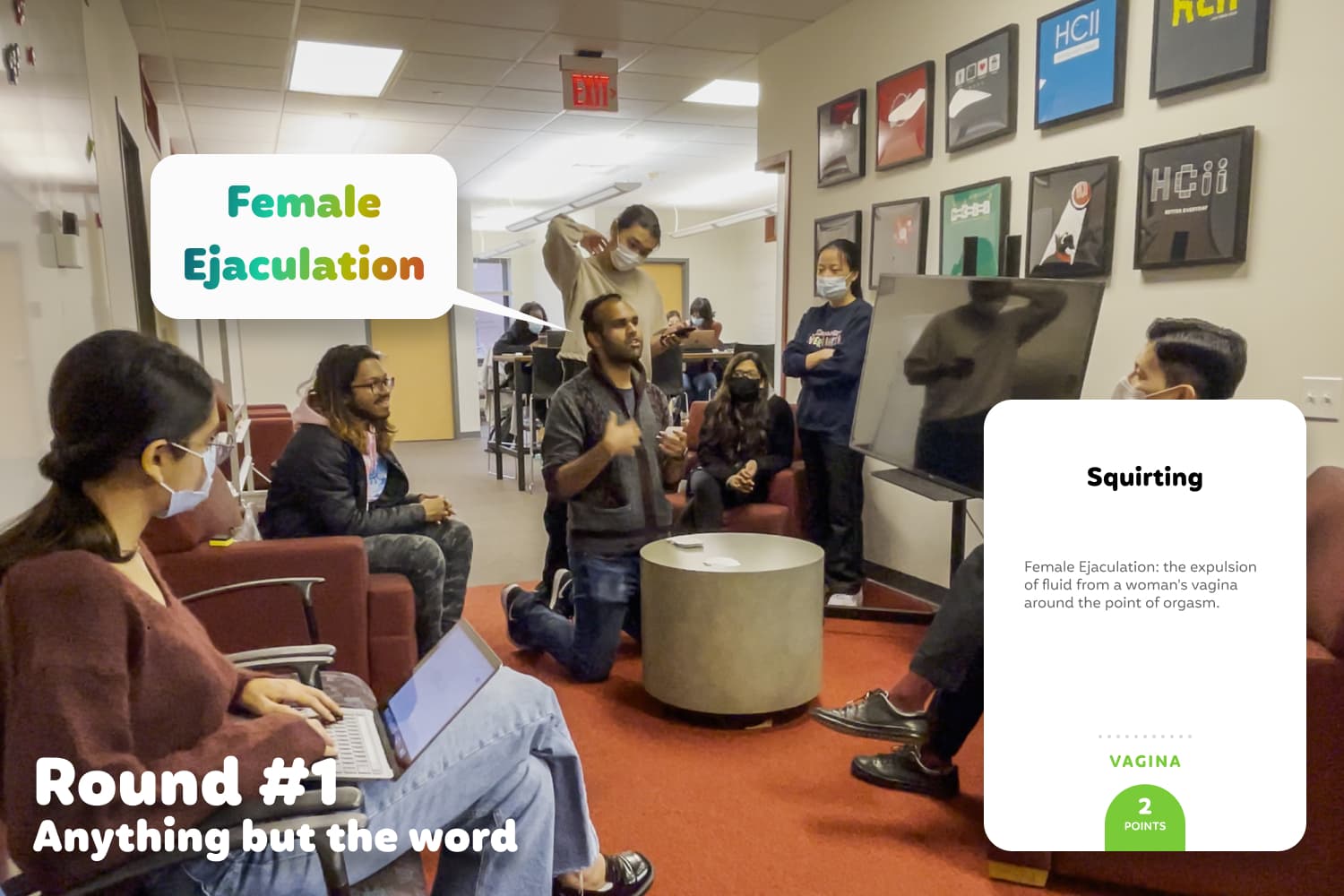
- Use any words, sounds, or gestures
- Cannot use the term itself
- Skip and reshuffle if term is accidentally used
- Reading provided card descriptions is allowed
Example: For "menstrual cramps," a player might say: "This is a monthly physical discomfort that many women experience in their lower abdomen..."
Round 2: One-Word Clues
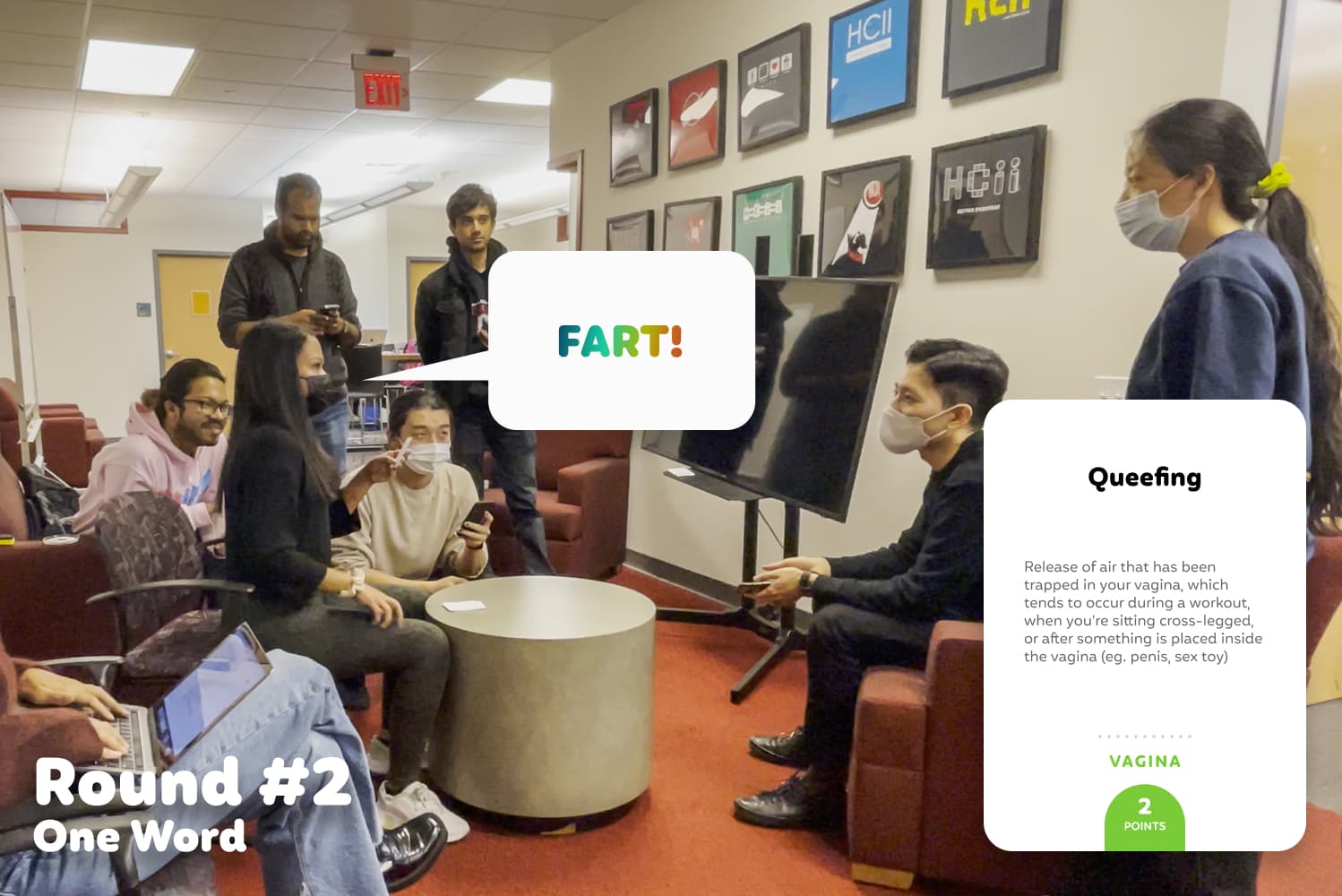
- Limited to a single word as clue
- Word can be repeated but no gestures
- Cannot use any part of the term
- Must be creative with association
Round 3: Draw or Charades
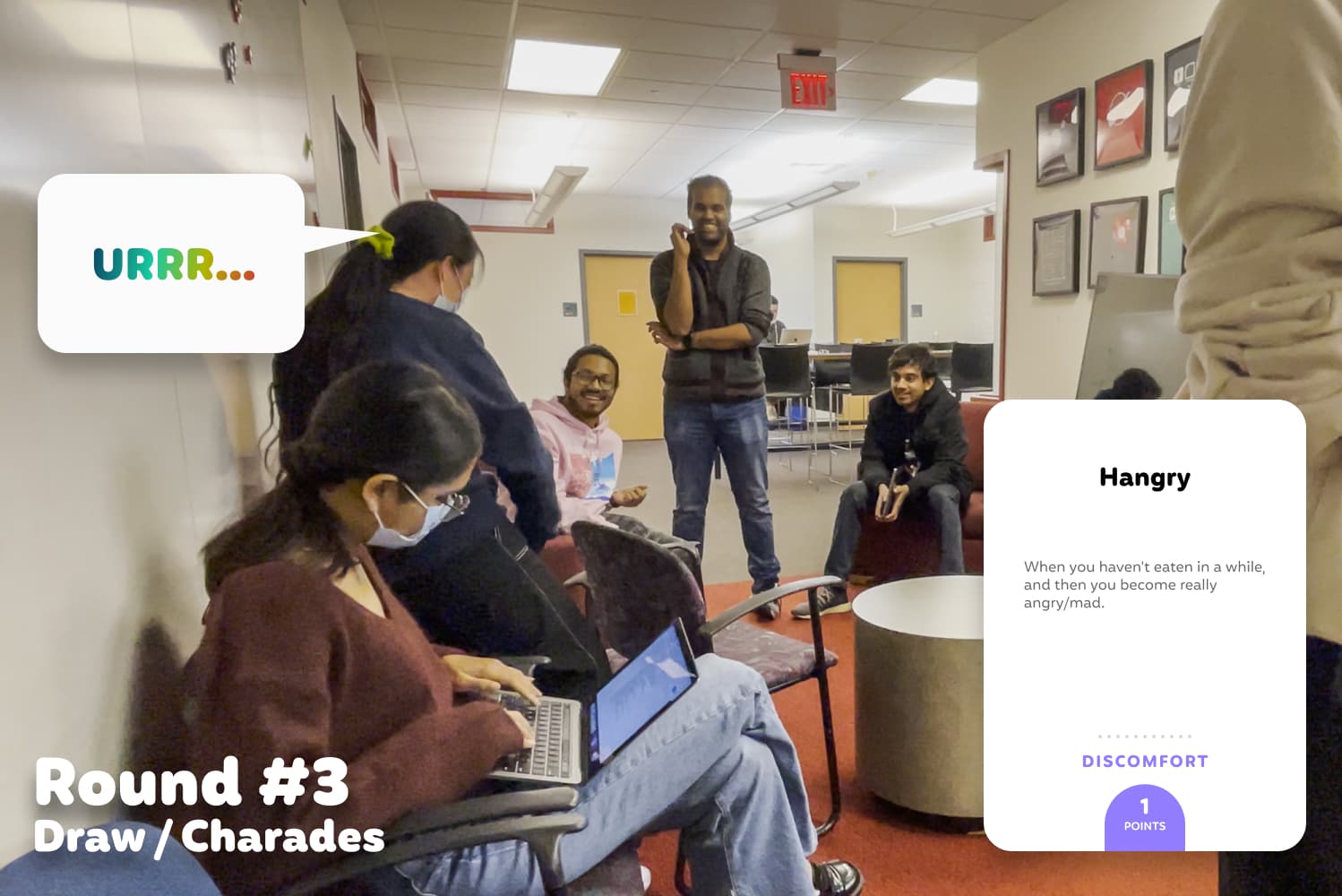
- Only charades or drawing allowed
- Complete silence except sound effects
- Time pressure adds excitement
- Most challenging expression mode
Example: For "menstrual cramps," a player might: Draw a calendar with circles and someone holding their stomach
Concept Video
Here's a video that showcases the game in action:
Impact & Future Development
Learning Through Play
Our final playtesting sessions revealed several positive outcomes:
Increased Comfort
Players showed progressively more ease discussing sensitive topics across rounds
Social Bonding
The game format created natural opportunities for sharing personal experiences
Knowledge Building
Players retained information through multiple exposures and varied expression
Reduced Stigma
Humor and play helped normalize conversations about taboo subjects
Future Directions
The project has several potential paths for development:
Digital Adaptation
Creating an online version for remote play and wider accessibility
Expanded Content
Developing additional card sets addressing other health and social topics
Cultural Localization
Adapting content for different cultural contexts and sensitivities
Acknowledgements
This work was developed under the guidance of Geoff Kaufman for the course Persuasive Design at School of Computer Science, Carnegie Mellon University.
